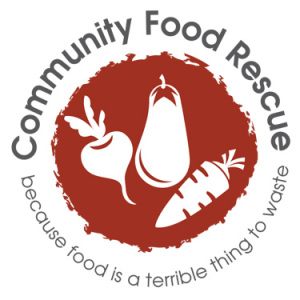July 2014
Monthly Archive
July 16, 2014
 by Cheryl Kollin
by Cheryl Kollin
It’s hard to visualize $165 billion. That’s the value of food wasted in the U.S. annually. It is also hard to grasp the staggering amount of food — 246,000 tons that is wasted right here in Montgomery County every year. The enormity of food waste hit home for me watching farmers donate many bathtub-sized grey bins of their unsold, perfectly good vegetables and fruit at the end of a bustling Sunday at the Olney Farmers Market.
While there are many active food recovery programs in our community, 23% of food in Montgomery County is still being wasted, while 82,000 people do not know where their next meal will come from. A new initiative called Community Food Rescue aims to build a coordinated countywide system that fulfills the vision of the Montgomery County Council, County Executive Ike Leggett, and the on-going efforts of the Montgomery County Food Council’s Food Recovery Working Group.
Read more here. View our short introduction film. Follow us on Facebook.
Cheryl Kollin is program manager for Community Food Rescue.
July 15, 2014
by Nic Wells
After his first wife died in 1914, President Woodrow Wilson secretly courted Edith Bolling Galt on regular strolls with her in Rock Creek Park. In 2008, police discovered a man from Chevy Chase growing marijuana in the Park, and in March 2013, someone sacrificed a goat and chickens in a part of the Park near Piney Branch Parkway.
These three dissimilar events share one common feature: Rock Creek Park.
While such anecdotes may or may not be good conversation starters, stories that impress, they are indicative of what geographers call a sense of place, a combination of experiences and certain attributes that makes a place distinctive. Without a doubt, Washingtonians have that sense of place with Rock Creek Park.
Because Rock Creek Park includes the main stem and many diverse units scattered throughout neighborhoods in Northwest and Northeast, Rock Creek Conservancy’s community engagement meetings this summer and fall seek to explore and understand locals’ senses of place of the Park.
We’ve held two meetings so far – one in Mt. Pleasant, the other in Chevy Chase. The turnouts at both were fantastic, with people asking questions and chatting about the Park over coffee, tea and delicious treats provided by local businesses. If you happened to miss these, there will be more community meetings in September and October, so stay tuned! Until then, explore the Park and develop your sense of place of place in Rock Creek Park like the charmer, the stoner and the butcher did, but unlike them, please keep it PG.
You also might want to check out a recent issue the Washington Post Magazine, which featured a great cover story about Rock Creek Park. Give it a read, and then get yourself to the Park!
Nic Wells, a McLean native, interns for Rock Creek Conservancy, part of the Bethesda Green Business Incubator, and studies Geography and Social Anthropology at the University of St Andrews in Scotland.
July 14, 2014
by Sophia Knoll
The Montgomery County Planning Department is considering EcoDistrict concepts — based on three core principles of sustainability: environmental, social and economic — as part of a 20-year plan for downtown Bethesda.
At a June 18 public meeting, Tina Schneider with the planning team and Otto Condon of ZGF Architects discussed how the Bethesda community can go about changing Bethesda for the better.
First off, they said that we must look at buildings, streets, and communities as a network that can seamlessly work together. According to Condon, everything within an EcoDistrict must be used for either retail, housing, office space, or culture and more importantly must focus on water and energy efficiency to “revitalize cities from neighborhoods up.”
Condon also mentioned that districts are the building blocks of sustainable cities, which has led the Montgomery County Planning team to divide Bethesda into four main districts in designing our own EcoDistrict.
In the second part of the meeting, people worked in groups of eight looking over maps of Bethesda and brainstormed over various goals, deciding which of the eight “Performance Areas” (Community Identity, Health and Well Being, Equitable Development, Habitats and Ecosystems, Materials, Water, Energy, and Access and Mobility) they would like to see associated within each district.
People offered their suggestions and ideas for the planning committee, which will move forward in creating a plan for the Bethesda EcoDistrict and submit it later this year to the County Council for approval.
For anyone who cares about Bethesda, it is important to get involved and become part of the process. Offer your ideas (send an email to bethesdadowntownplan@montgomeryplanning.org) and help ensure Bethesda’s future as an efficient, vibrant, and environmentally friendly community.
Sophia Knoll is a Bethesda Green intern and a rising high school senior at Georgetown Visitation.

